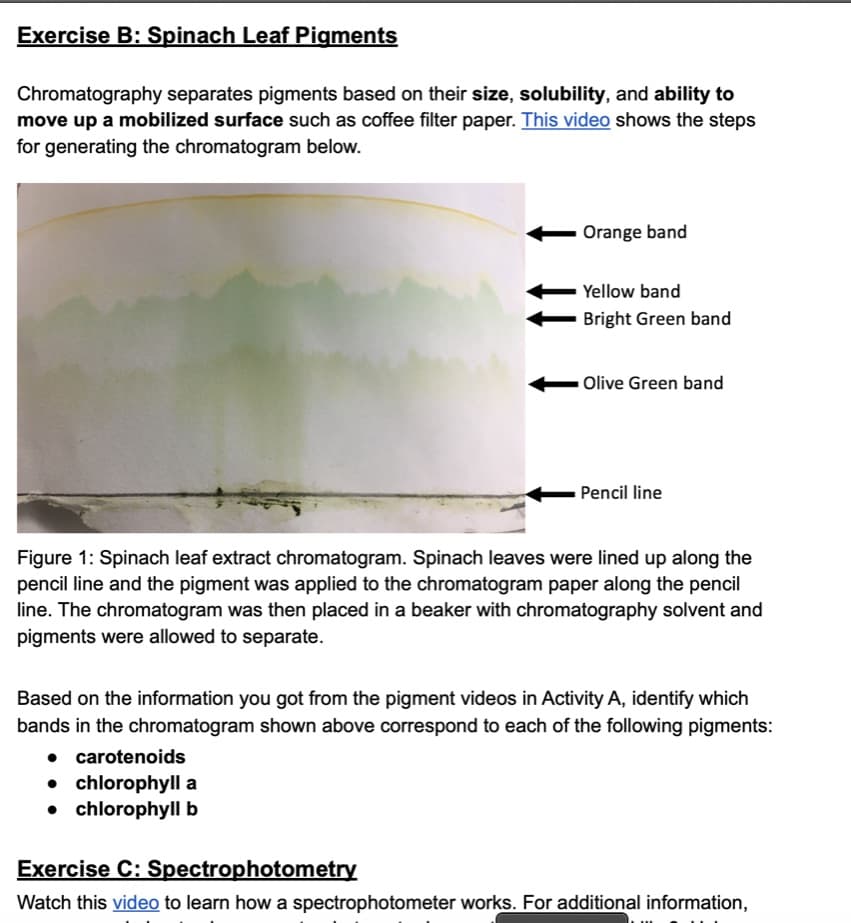Define the following terms: photosynthesis chromatography absorption spectrum action spectrum chlorophylls carotenoids (carotene and xanthophyll)
Electron Transport Chain
The electron transport chain, also known as the electron transport system, is a group of proteins that transfer electrons through a membrane within mitochondria to create a gradient of protons that drives adenosine triphosphate (ATP)synthesis. The cell uses ATP as an energy source for metabolic processes and cellular functions. ETC involves series of reactions that convert redox energy from NADH (nicotinamide adenine dinucleotide (NAD) + hydrogen (H)) and FADH2(flavin adenine dinucleotide (FAD)) oxidation into proton-motive force(PMF), which is then used to synthesize ATP through conformational changes in the ATP synthase complex, a process known as oxidative phosphorylation.
Metabolism
Picture a campfire. It keeps the body warm on a cold night and provides light. To ensure that the fire keeps burning, fuel needs to be added(pieces of wood in this case). When a small piece is added, the fire burns bright for a bit and then dies down unless more wood is added. But, if too many pieces are placed at a time, the fire escalates and burns for a longer time, without actually burning away all the pieces that have been added. Many of them, especially the larger chunks or damp pieces, remain unburnt.
Cellular Respiration
Cellular respiration is the cellular process involved in the generation of adenosine triphosphate (ATP) molecules from the organic nutritional source obtained from the diet. It is a universal process observed in all types of life forms. The glucose (chemical formula C6H12O6) molecules are the preferred raw material for cell respiration as it possesses a simple structure and is highly efficient in nature.
Introduction
The major context for this lab is photosynthesis, and the overall equation for photosynthesis is:
12 H2O + 6 CO2+ light energy → C6H12O6+ 6O2+ 6 H2O
Exercise A: Photosynthetic Pigments
Watch the following two videos about plant pigments and chromatography. To analyze the data we’ll give you, you’ll need to understand what types of pigments are found in a leaf, and understand some general characteristics of those pigments.
- Photosynthetic Pigments (~3 min)
- link: https://www.youtube.com/watch?v=dwz3qozDiyI
- Leaf Color Chromatography (~4.5 min)
- link: https://www.youtube.com/watch?v=qH-AJDqsSII
Answer the below questions :
- Define the following terms:
- photosynthesis
- chromatography
- absorption spectrum
- action spectrum
- chlorophylls
- carotenoids (carotene and xanthophyll)
- Referring to the Photosynthetic Pigments video, in the table below, write in the peak wavelength ranges absorbed by each of the following pigments. Include the colors that are associated with those wavelengths.
|
Pigment |
Wavelengths utilized for photosynthesis |
|
carotenoids |
|
|
chlorophyll a |
|
|
chlorophyll b |
|
- If a pigment shows a high peak of absorption at a specific wavelength of light, does light of that wavelength power photosynthesis?
- Explain using information from the video.
- Identify the pigments that are most associated with the fall colors of leaves.
- Are those pigments found in a leaf even when it is green, like during the spring and summer?
- If those pigments are found in leaves throughout the year, what is the main reason we do not see those colors year-round?
- Based on your answers to the above questions, complete the statements about the role of pigments in photosynthesis found below.
- In the absorption spectrum shown in the Photosynthetic Pigment video (at time 1:18), do most pigments show a peak or a valley at wavelengths between 550 nm - 600 nm?
- What color corresponds to the 550-600 nm range of light wavelengths?
- In general, do we see or not see these colors (those that correspond to the 550- 600 nm range of light wavelengths) in plant cells?
- Based on this, is the color we associate with plant cells absorbed or not absorbed by plant pigments?
- Based on this, does the color we associate with plant cells contribute or not contribute to photosynthesis?

Trending now
This is a popular solution!
Step by step
Solved in 3 steps




